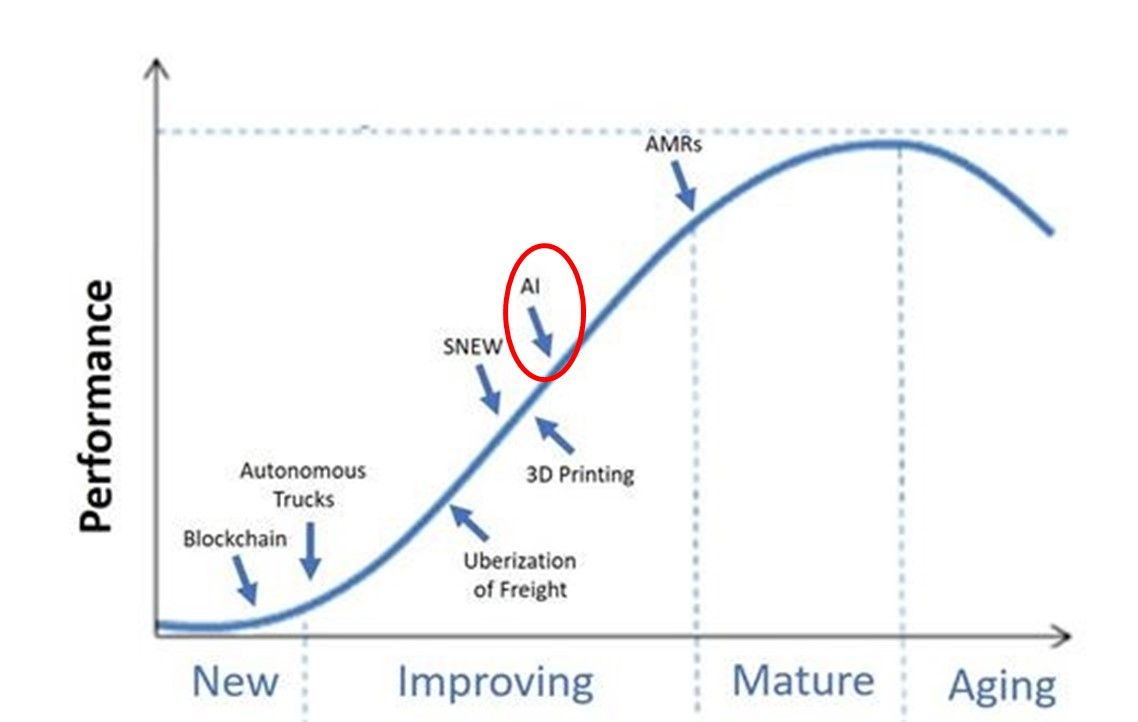Billions in venture capital have been invested in AI firms, some of them focused on solving digital supply chain problems. Machine learning, a subset of AI, is particularly hot. Interestingly, neither AI nor machine learning is a new technology in supply chain management (SCM). However, partly because this technology is hot and partly because there is so much more data becoming available for analysis, we’re seeing a new focus on using these techniques to improve supply chain applications. End users stand to benefit.
Key findings include:
- Machine learning has long been used to improve demand forecasting, but is most useful when downstream data is leveraged. Far too few companies use downstream data even though these data sets greatly increase forecast accuracy.
- One global trade management supplier has used very advanced AI techniques to improve its application. AI talent is scarce, and the most advanced AI techniques are generally associated with finance and marketing, but this solution shows what is possible.
- Supply chain planning suppliers have cadres of PhDs in operations research working for them. They have the talent to apply these techniques. But getting the data, massaging it, and effectively moving it into the supply chain applications has been a problem. This is particularly true for supply planning.
- Several interesting AI startups are focused on supply chain management. Two suppliers focused on improving supply chain resiliency have excellent references. Others don’t yet have these reference customers, but are worth monitoring.
- Social, news, event, and weather data feeds have great potential. But except for news feeds used for resiliency solutions, these data feeds have not yet been leveraged effectively.
Crunchbase reported that over $4 billion in venture capital has been invested in AI firms over the last year in the US alone.In the supply chain realm, the branch of AI known as machine learning is a particular focus for development. The focus on machine learning is most pronounced in the supply chain planning realm where Digital Supply Chainone director of planning solutions said, “The adoption of machine learning is the key driver in the ‘arms-race’ between software vendors to achieve differentiation.”

Perhaps last year’s biggest catch phrase was the “Internet of Things” (IoT).IoT is centered on the idea that there is a tremendous amount of sensor data that could be used to run value chains more effectively. This year, the catch phrase is “digitization.” “Digitization” involves a focus on emerging technologies that stand to fundamentally change the way we run our businesses, including our supply chain operations.These technologies include Blockchain, additive manufacturing, drones and robots, and artificial intelligence and machine learning. Not all these newer and emerging technologies are at the same level of maturity.AI, however, is rapidly moving up the supply chain maturity curve.
AI in the supply chain realm is less of a “science project” than in many other areas. To teach a computer how to recognize a picture, you expose it to terabytes of data and feed it hundreds of thousands of images.Those images have had to be preclassified by humans (i.e., This is a picture of a “dog”) which itself is incredibly costly.Supervised learning occurs when humans are in the loop to help the machine learning.In contrast, in supply chain management, many of the problems are more structured, humans are usually not needed to classify the outputs, and supply chain software companies already have cadres of operational research PhD’s working for them. These problems can be solved with unsupervised learning, a much more affordable approach to solving problems.



